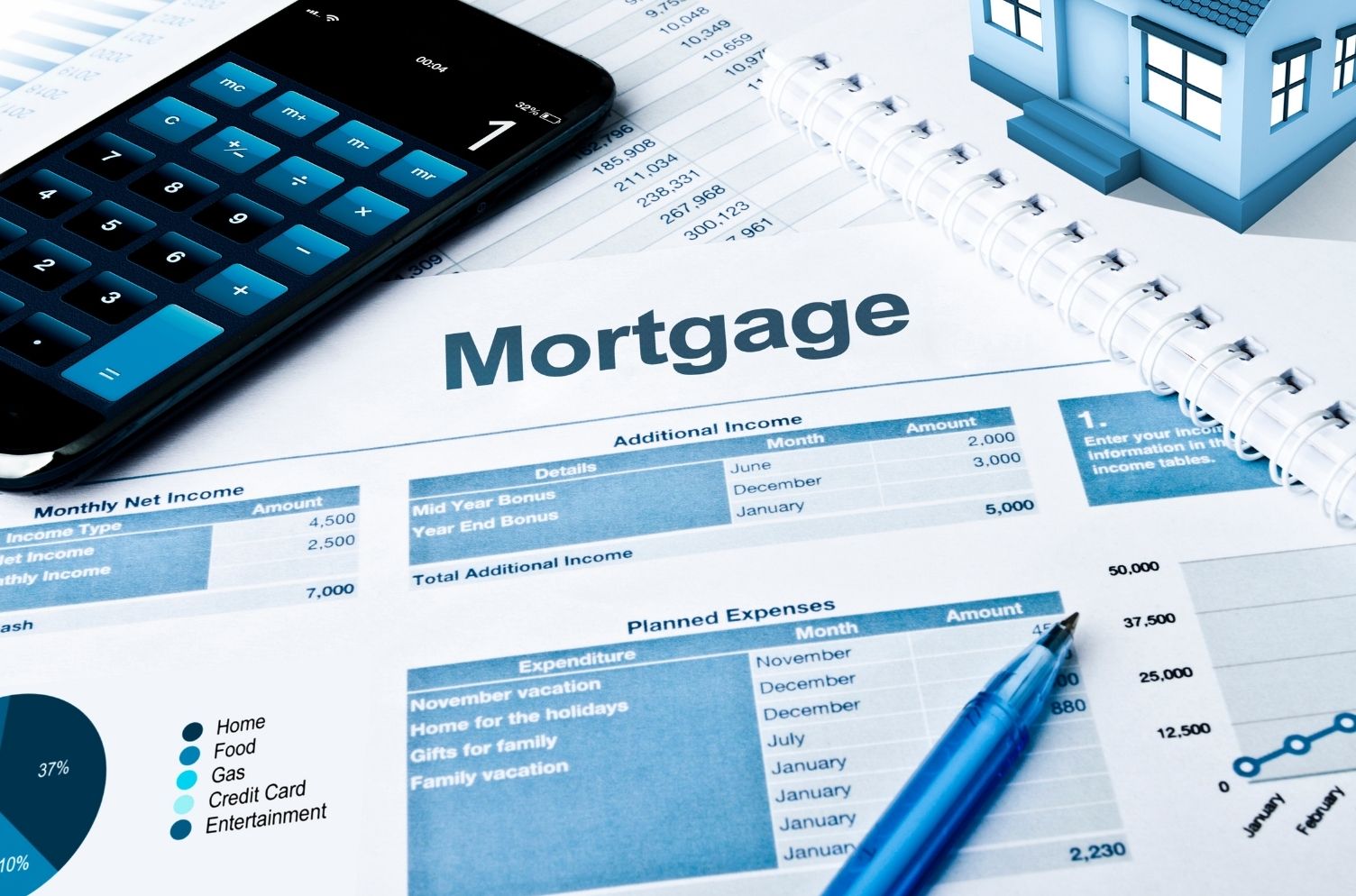What Are Some Ways To Finance Home Improvements?

Are you worried about how to finance home improvements? Many homeowners face this challenge when they want to upgrade their properties. Understanding your options can open the door to smart solutions.
Exploring Financing Options for Home Improvements
There are various ways to finance your home improvements. Let's explore different options like remortgage and personal loans.
Using Remortgaging for Home Improvements
Homeowners can use remortgage to fund their renovations by switching to a new mortgage provider. For example, if you owe £150,000 on your home, a lender might offer you £170,000.
This extra £20,000 can go towards upgrades like a new kitchen or energy-efficient windows.
Remortgaging often comes with lower interest rates than an unsecured personal loan. Consider any early repayment charges and remortgage fees. Choosing this option at the end of your fixed-rate term could save money in the long run.
Securing Home Equity Loans
Securing home equity loans can be a great way to fund improvements. These loans allow you to borrow against the value of your property. Many lenders offer up to £100,000, though some will go higher depending on your home's equity and market value.
The home improvement loan is a secured homeowner loan by your house as collateral. Risk comes with these loans if repayments are missed. Non-repayment could lead to losing your house. Compare options from different banks to find good rates and terms.
Opting for Personal Loans
Personal loans can provide quick funding for home improvements. These unsecured loans do not require collateral, but depend on your creditworthiness. You can borrow between £25,000 and £50,000.
Fixed-rate options allow you to better predict monthly repayments.
Most personal loan terms are 5-7 years. Be prepared for higher monthly payments compared to a secured loan. Interest rates will be more favorable if you have a high credit score. This option works well when you want to avoid using your property as security.
Applying for Government Grants and Schemes
Government grants can help fund home improvements. Though the Green Homes Grant is now closed, you should check GOV.UK for other available assistance options. Banks may provide lower mortgage rates if you aim to boost your home's energy efficiency.
In 2022, many homeowners delayed their renovations due to financial worries. Such statistics highlight the importance of seeking all possible funding avenues. Some banks support energy-efficient upgrades with favourable loan terms and interest rates.
Evaluate the Pros and Cons of Remortgaging
Remortgaging your home can be a smart way to finance improvements. It's vital to weigh the pros and cons before making a decision.
Pros:
- Lower Interest Rates:
Lenders often offer lower rates for remortgages compared to personal loans. This can save you significant money over time. - Larger Loan Amounts:
You can borrow more through a remortgage than many other loan types. This is especially useful for extensive home renovations. - Free Valuation and Legal Work:
Some deals include free property valuation and legal work, reducing upfront costs. - Long-Term Repayment Options:
Repaying the increased existing mortgage amount over many years can make monthly payments more manageable. - Increasing Property Value:
Home improvements funded by remortgaging can boost your property's value, benefiting you in the long term.
Cons:
- Risk of Repossession:
Failing to meet repayments could lead to losing your home, making this a high-risk option for some homeowners. - Early Repayment Charges:
Paying off your mortgage early may incur fees ranging from 1-5% of the outstanding balance. - Higher Interest with High LTV Ratios:
Higher loan-to-value ratios typically attract higher interest rates, increasing repayment amounts over time. - Increased Total Interest Costs:
You pay interest on the increased borrowing over the entire mortgage term, potentially costing more overall. - Potential Switching Costs:
Though some deals offer incentives, switching lenders may involve additional charges that need consideration.
Assess Benefits and Drawbacks of Home Equity Loans
Home equity loans can be a great way to pay for home improvements. They have their benefits and drawbacks.
- Access to Large Sums: Homeowners can borrow up to £500,000 based on their property’s equity.
- Lower Interest Rates: They often come with lower rates, compared to credit cards or personal loans.
- Fixed Rates: Many offer fixed interest rates. This means predictable monthly payments.
- Tax Deductible Interest: In some cases, the interest paid on these loans may be tax-deductible.
- Longer Repayment Terms: These loans can have terms similar to first mortgages, making repayment more manageable over time.
Drawbacks:
- Risk of Foreclosure: Non-repayment could result in the mortgage lender repossessing the house.
- Fees and Closing Costs: Often associated with high fees and closing costs which add up quickly.
- Higher Interest if Low Equity: If the property doesn't have much equity, higher interest rates may apply.
- Impact on Credit Score: A significant loan amount impacts your credit report and history if not managed well.
Understanding these factors helps in comparing financing options for home improvements.
Explore Ways to Access Government Grants
Accessing government grants can help fund your home improvements. Although the Green Homes Grant applications are closed, other options exist.
- Energy Efficiency Incentives: Some banks offer lower mortgage rates for energy efficiency improvements. Look into these special rates when seeking a mortgage for home improvements.
- Local Authority Grants: Local councils often have schemes to support homeowners with renovations. Contact your local authority to learn what is available in your area.
- Home Improvement Agencies (HIAs): These agencies assist elderly or disabled homeowners with repairs and modifications. They can guide you through the application process for financial aid.
- Housing Associations: Members of housing associations may receive grants for property upgrades. Enquire about available offers or discounts for members.
- Energy Company Obligation (ECO): Major energy suppliers might help you make energy-efficient upgrades free of charge or at a reduced rate under the ECO scheme.
- County Court Judgments (CCJs): If you have a CCJ, it might affect eligibility for certain grants or lower-rate loans, so check this before applying.
By exploring these avenues, you can find ways to finance your home improvements without impacting your finances heavily.
Key Factors to Consider When Selecting a Financing Option
Compare interest rates to find the best deal. Check loan terms closely for any hidden fees or conditions.
Compare Interest Rates
When choosing a financing option for home improvements, comparing interest rates is crucial. Here's a summary table to help you understand the differences across various options.
Remortgaging can offer lower interest rates. Higher LTV ratios often lead to increased rates. Home equity loans depend on available equity. Personal loans have higher rates but simpler applications. Government grants may have zero interest but stringent eligibility.
Review Loan Terms
After comparing interest rates, the next important step is to review loan terms. This ensures you choose the best financing option for your home improvement project. Here's a detailed breakdown of what to look for in loan terms:
Remortgaging a home means extending a mortgage term. This can be over 25 years or more, providing lower monthly payments but stretching the debt longer. Home equity loans allow homeowners to borrow against the value of their home. The repayment terms usually range between 5 to 15 years, with the home used as collateral.
Personal loans are unsecured, meaning they don’t require collateral. These loans have repayment terms of 5-7 years, often with higher interest rates due to the lack of security. Government grants provide financial aid without the need for repayment. These usually come with specific eligibility requirements and are worth exploring for those who qualify.
Assess Repayment Capacity
Check your affordability for monthly repayments before committing to financing options. Establish clear financial goals. Assess if you can meet repayments without strain.
Ensure you understand interest rates and loan terms. Failing to make mortgage repayments could result in repossession of your home. Calculating how changes in the variable rate may affect payments is crucial.
Strategies for Managing Home Improvement Financing
Compare different lending options to find the best rate of interest. Create a budget that includes all expected home improvement costs.
Plan for Repayment
Establish achievable financial goals before taking on loans for home improvements. This ensures you can manage monthly repayments without stress. Assess your affordability, especially with options like remortgaging that offer longer repayment terms of up to the mortgage period.
Compare interest rates and loan terms carefully to secure the best deal. Be aware of Loan to Value (LTV) ratios which determine how much equity you release from your property. By budgeting for home improvement costs, avoid overspending and ensure timely repayments to protect your investment.
Budget for Home Improvement Costs
Set a budget for home improvement with an allowance for contingencies. Plan to have about 10-20% extra to cover any unexpected costs. Compare quotes from at least three contractors to find the best deal.
Evaluate all borrowing methods carefully. Consider using remortgaging, securing a home equity loan, or opting for personal loans as ways to finance your project. Assess each option’s long-term impact on your finances before making a decision.
Make sure you assess overall costs and repayment capability before borrowing.
Conclusion
Financing home improvements can be simple. Explore options like remortgaging or getting a personal loan. Check out government grants and schemes to save money. Always compare interest rates and terms before making a choice.
With the right plan, you can improve your home without breaking the bank! Contact Revolution Brokers for more information about getting the mortgage under the best conditions.
Related Posts
Ask the Expert
Mortgage Brokers


_7779.jpg)

